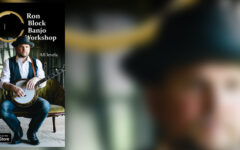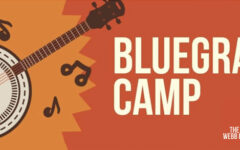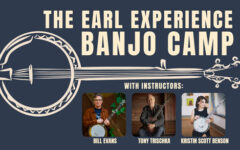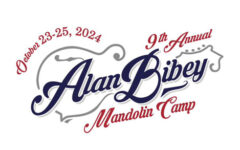 Matt Glaser has been a fixture in the string music scene in the northeastern US since he was in his 20s.
Matt Glaser has been a fixture in the string music scene in the northeastern US since he was in his 20s.
As a young man he recorded and performed with other acoustic string crazies like Tony Trischka, Marty Cutler and Andy Statman as a part of the Wretched Refuse String Band. He received a masters degree in music from Tufts University and was involved in the transcription and authoring of a number of fiddle books for Oak Publications.
Matt always had an interest in a wide range of fiddle styles, from the old time music that first caught his ear as a young boy, to the wide ranging world of jazz violin. He continued to perform and record across these genres, even as he became known as an authority on American fiddle music and a first rate educator.
In the 1980s, two events occurred which changed the direction of his musical life. He was asked by Bob Share, then provost of Berklee College Of Music, to help them launch a string department at the rapidly-evolving college in Boston. He was the lone instructor when the department was announced, and has served as its chairman this past twenty eight years, overseeing a faculty of 8-10 instructors.
Glaser also became acquainted with filmmaker Ken Burns, then not so much a celebrity as he is today, and played on the budding director’s first documentary film, The Brooklyn Bridge in 1980. When work began on The Civil War, Burns’ epic mini-series for PBS, Matt was asked to be a musical consultant, and was a featured artist on the award-winning soundtrack.
His fiddle, and that of Jay Ungar, was heard in the film on Ungar’s gorgeous tune, Ashokan Farewell, which may be the most widely heard piece of fiddle music in the past 100 years. He and Jay also performed together as Fiddle Fever for several years.
Now, with twenty eight years under his belt at Berklee, Glaser found that the job he had so cherished all these years was taking him farther and farther away from what excited him about the position when the string program was first established – that being actually teaching the violin. Realizing that administrative work had nearly removed him from the classroom, Matt approached Berklee president Roger Brown about a role change at the college, with the result being the American Roots Music Program, with Glaser at the helm.
Matt explained a bit about how this all came to be…
“Since he first arrived at Berklee, Roger Brown has been vocal about his desire to create a home for all kinds of American music that feeds into rock and pop – classic country, old time, bluegrass, blues, polka, western swing, gospel…. what have you. When I met with him to share my interest in possibly relinquishing the string chair, we began discussing the idea of creating the American Roots Music Program.
We talked about how the institutional structures of academia don’t always allow for us to accommodate new ways of thinking about music education. This new program will be outside the school’s structure of divisions and departments, and my duties will include designing curricula, developing theories of improvising in other genres besides jazz (roots music), faculty development, and facilitating discussion among the faculty about these things within the Berklee community.
I have always recognized that old time musicians, blues artists and swing musicians approach improvisation in ways that are different from jazz soloists, and we want to find a way to analyze and quantify these ways of improvising so that we can expose our students to this other way of thinking.”
Glaser says that other roots music faculty specialists – like Mark Simos, David Hollender and John McGann – will play a part in the various activities of the American Roots Music efforts. He plans to travel a good deal, to speak at and with other institutions, and with the media.
“This sort of thing is hard to codify and talk about, but that doesn’t mean that it isn’t worth talking about. There is a ton of great indigenous American music worthy of study and I look forward to this opportunity to help Berklee explore and explain how its great practitioners go about playing it.”
He will also spend more time teaching violin, something that will redound to the benefit of the many string students at the school.
Glaser’s title will be Artistic Director, and he will have at his disposal a Board of Advisors made up of artists recognized for their mastery of these many idioms in Berklee’s broad definition of “roots music.” Grassers Ricky Skaggs and Don Rigsby are on the board, along with progressive string musicians David Grisman, Béla Fleck, Darol Anger and Edgar Meyer, western swing stalwart Ray Benson, Memphis roots rocker Doug Wamble, Irish fiddler Liz Carroll, Cajun fiddler Michael Doucet, fingerstyle guitarist Leo Kottke, old time artists Bruce Molsky, Jay Ungar and Molly Mason, champion fiddler Fletcher Bright, former Nickel Creekers Sara and Sean Watkins, jazz/bluegrass/old time fusionist Charlie Haden, and – inexplicably – yours truly, John Lawless of AcuTab and Bluegrass Today. More are expected to be named soon.
With Matt stepping down, Melissa Howe has assumed the chair of the Strings Department at Berklee, effective June 1.
The ARMP will have its official rollout this December. Mark O’Connor will be at Berklee for a week and the new initiative will be presented to the media and the Berklee community at that time. This summer and fall will involve mostly preparatory work, with more visible undertakings starting to pop up next year. Glaser expects to see the new program producing concerts and hosting visiting artists in addition to designing and implementing seminars and symposiums.
“We are planning a symposium for sometime in 2010 to examine similarities and dissimilarities between jazz and country music. I am thinking of calling it ‘Jazz and Country: Kissing Cousins or Hatfield and McCoys.’ “
We hope to hear news about the Berklee American Roots Music Program for many years to come.







